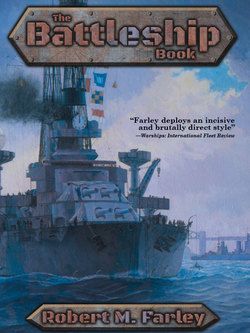Читать книгу The Battleship Book - Robert M. Farley - Страница 9
На сайте Литреса книга снята с продажи.
Battlecruiser, Dreadnought, Super-dreadnought, Fast Battleship
ОглавлениеThe pre-dreadnought and the armored cruiser dominated the naval landscape in the years preceding the construction of Dreadnought. The ship types were relatively close in size Both fleets at Tsushima had examples of each, and most major navies kept both in the line. Tsushima helped demonstrate the pre-dreadnought’s advantages over the armored cruiser, although naval architects in the United States and elsewhere had already begun to notice shortcomings of the type.
In any case, HMS Dreadnought and HMS Invincible made both pre-dreadnoughts and armored cruisers obsolete. This inaugurated two types of capital ship: the dreadnought and the battlecruiser. Dreadnoughts would compose the line of battle fleet, while battlecruisers would use their greater speed to act as fleet scouts and to perform other necessary duties.
The dreadnought was soon superseded by the super-dreadnought, which essentially cleaned up all the architectural problems with the earliest modern battleship. Reciprocating engines and wing turrets were out; super-dreadnoughts took advantage of superfiring weapons, and rationalized the armor scheme. They largely kept the same speed as dreadnoughts, meaning that the battleship/battlecruiser distinction remained useful. Even among battlecruisers, however, second-generation ships (super-dreadnought battlecruisers, essentially) were distinctly different, better balanced than their earlier sisters.
And then came the fast battleships. The first real fast battleship was probably HMS Hood, which was classified as a battlecruiser but much more heavily armored than earlier ships. The Japanese followed up Hood with HIJMS Nagato, which could make 26 knots. They also reconstructed the Kongo class ships in an effort to bring them up to battleship standards. The first post-treaty fast battleships were the Dunkerques, which combined high speed, heavy armament, and heavy armor. The battleships of the Second World War were distinctly superior to their predecessors, both because of more optimized armor and armament schemes, but also because they effectively combined the characteristics of dreadnought and battlecruiser.
